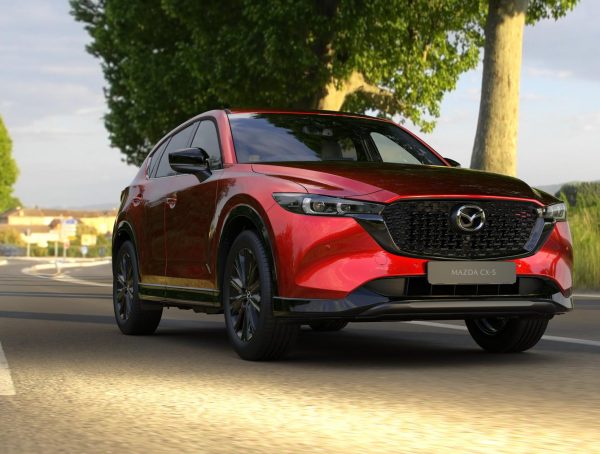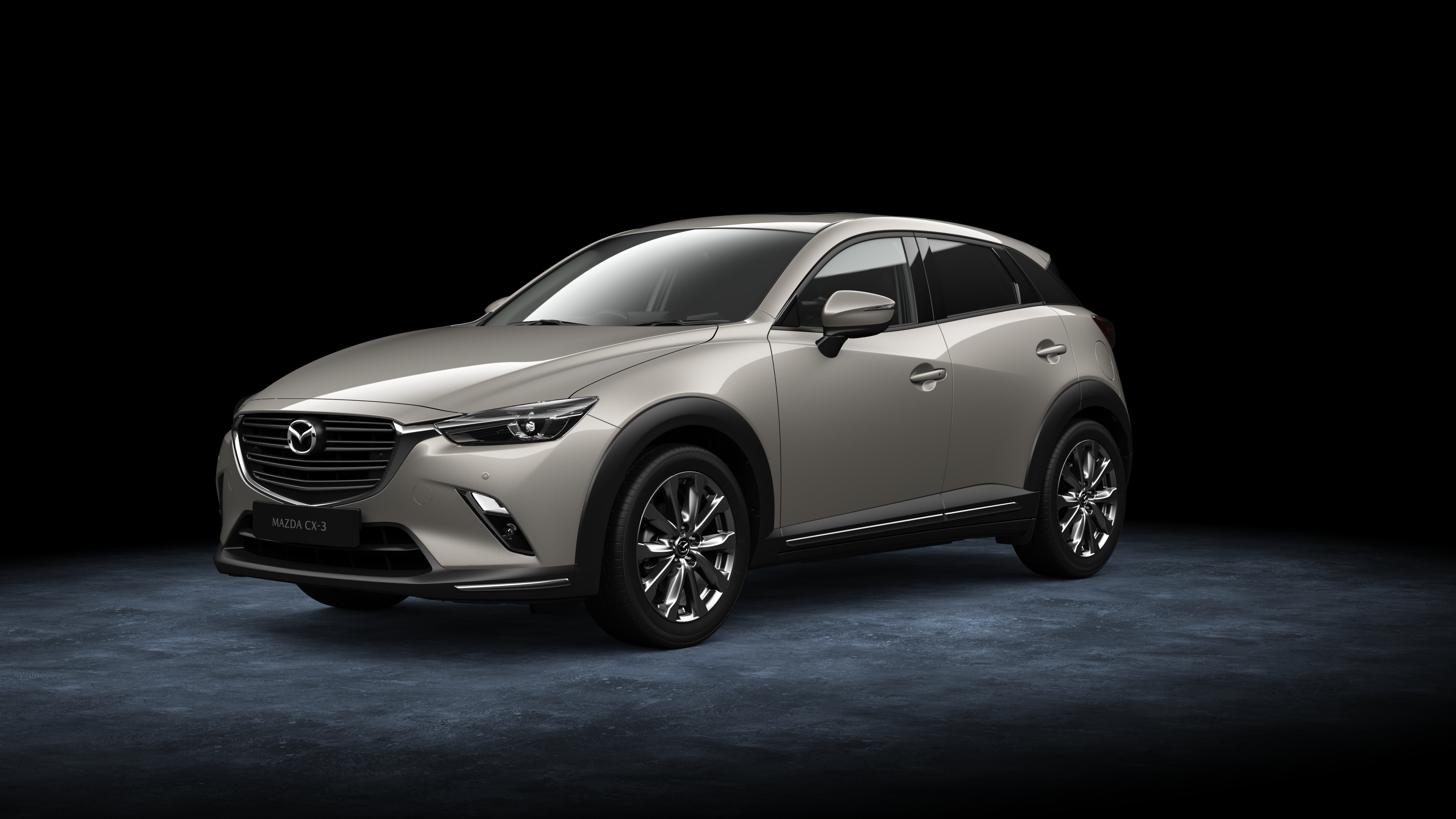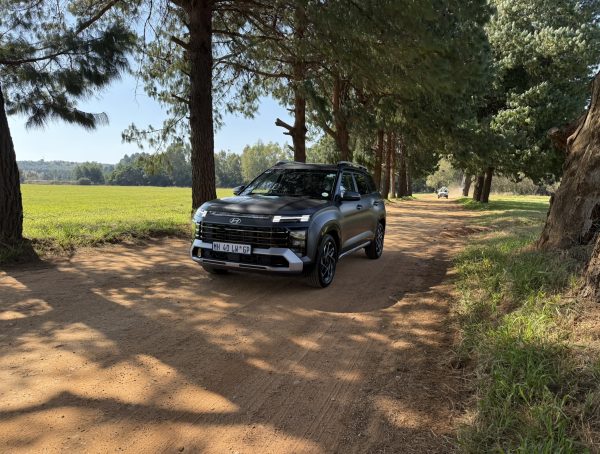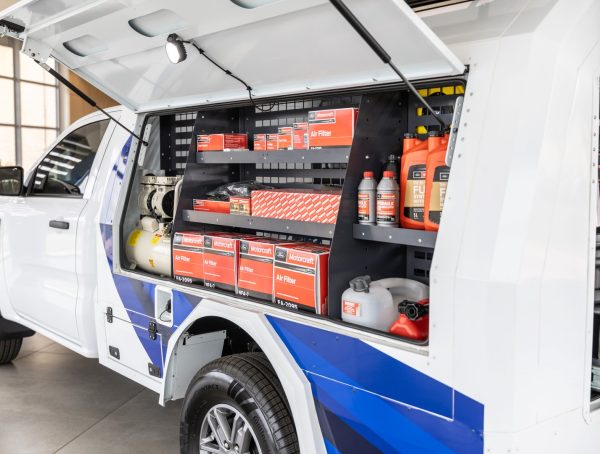The South African premium SUV market is fiercely competitive, with European marques traditionally dominating the segment. Enter the Mazda CX-60 3.3L, the Japanese manufacturer’s most ambitious attempt yet to compete against established luxury contenders. Built on Mazda’s new rear-biased all-wheel drive Large Product Group platform, this mid-size SUV represents a significant departure from Mazda’s traditional front-wheel drive offerings. We spent a week with the CX-60 3.3L on harsh Gauteng roads to discover whether it delivers on its premium promise.
Purposeful Power Under the Bonnet
The star of the show is undoubtedly what’s under the bonnet. The CX-60 3.3L houses Mazda’s first-ever straight-six diesel engine – a 3.3-litre turbocharged unit that delivers 187kW of power and a commanding 550Nm of torque. This powerplant is mated to an eight-speed automatic transmission, deliberately eschewing the continuously variable transmissions (CVTs) that have become commonplace in the segment.
On the road, the inline-six provides effortless acceleration, with peak torque available from just 1,500rpm. The engine’s smooth character is immediately noticeable, especially when compared to four-cylinder competitors. Whether overtaking on the N1 highway or navigating the winding passes of Mpumalanga, the CX-60 responds with assured confidence. The engine’s refinement is particularly impressive, with diesel clatter well-suppressed even under hard acceleration.

The real revelation, however, comes in the CX-60’s handling characteristics. Mazda’s decision to adopt a rear-biased drivetrain configuration pays dividends in the way this sizeable SUV tackles corners. There’s a balance to the chassis that’s reminiscent of premium European offerings, with precise turn-in and impressive body control for a vehicle of this size and weight. The Mi-Drive system offers customisable driving modes including Normal, Sport, Off-Road and Towing, with each noticeably altering the vehicle’s character.
Fuel economy is respectable for a vehicle in this class. During our testing on a mix of urban and highway routes, the CX-60 3.3L returned approximately 8.2L/100km, impressively close to Mazda’s claimed 5.9L/100km combined figure.
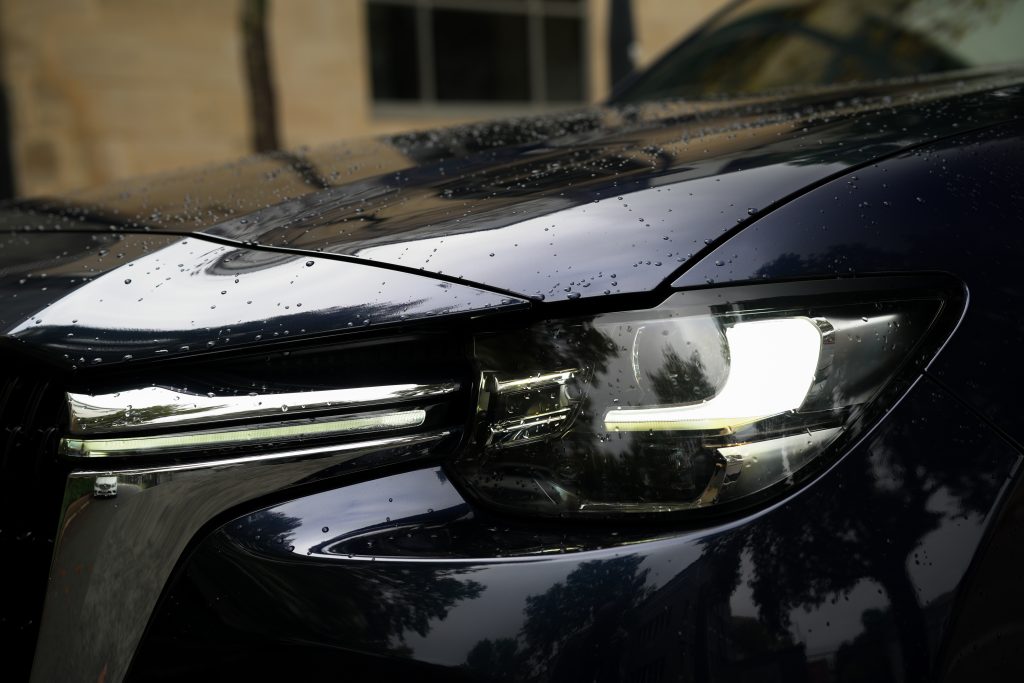
Premium Interior Execution
Step inside the CX-60, and it’s immediately apparent that Mazda has moved upmarket. The cabin follows Mazda’s ‘less is more’ design philosophy with a clean, uncluttered dashboard that eschews the trend of overwhelming digitalisation. High-quality materials abound, with genuine wood trim, Nappa leather, and precise aluminium (or is it chrome?) accents creating an ambiance that wouldn’t feel out of place in vehicles costing substantially more.
The front seats deserve special mention, offering 10-way electric adjustment with heating and ventilation functions in the top-spec Takumi trim we tested. The driver’s seat features Mazda’s Driver Personalisation System, which uses facial recognition to automatically adjust seat position, steering wheel, side mirrors, and even climate control settings based on saved driver profiles – a neat party trick that actually proves useful in daily use.

The 12.3-inch infotainment screen isn’t the largest in the segment, but it’s thoughtfully implemented with both touch and rotary dial controls. Wireless Apple CarPlay and Android Auto are standard, as is a wireless charging pad. The 12-speaker Bose sound system delivers impressive audio quality, though it stops short of the audiophile experience offered by some European rivals.
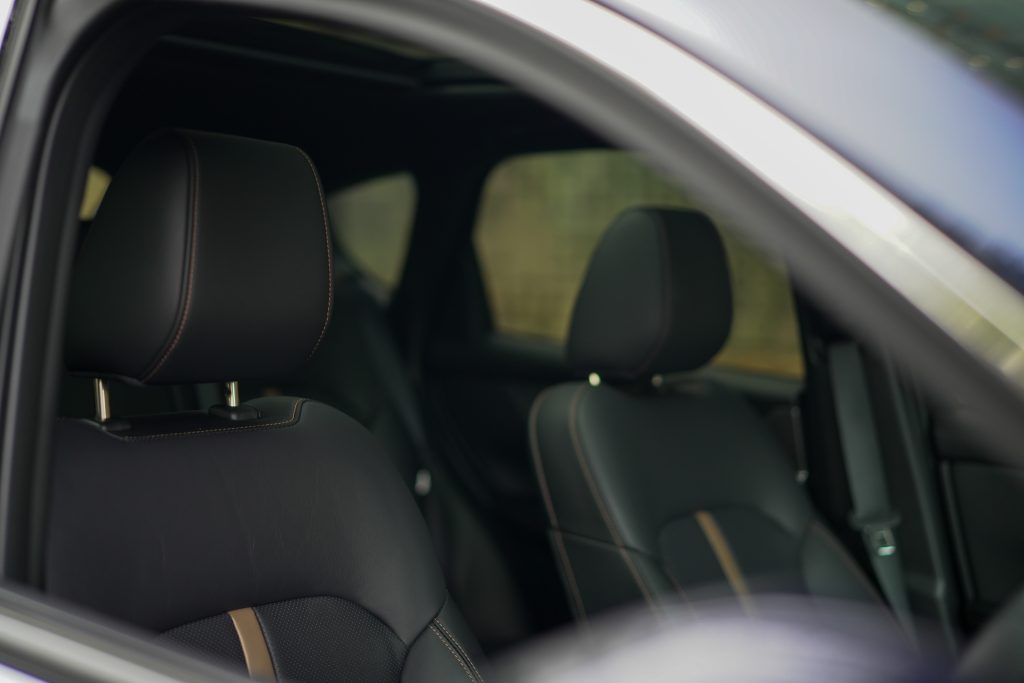
Rear seat passengers aren’t forgotten either, with generous legroom and dedicated climate controls. The panoramic sunroof, standard on higher trims, floods the cabin with light and enhances the sense of spaciousness. Boot space is a practical 570 litres with the rear seats in place, expanding to 1,726 litres when folded – ample for family holidays or weekend getaways to Bela-Bela.
Distinctive Design Language
The CX-60’s exterior design represents an evolution of Mazda’s ‘Kodo’ design language, characterised by clean surfacing and minimal character lines. The long bonnet and set-back cabin visually communicate the vehicle’s rear-drive architecture, while the front end is dominated by a bold grille and slim LED headlights that give the CX-60 a purposeful stance.
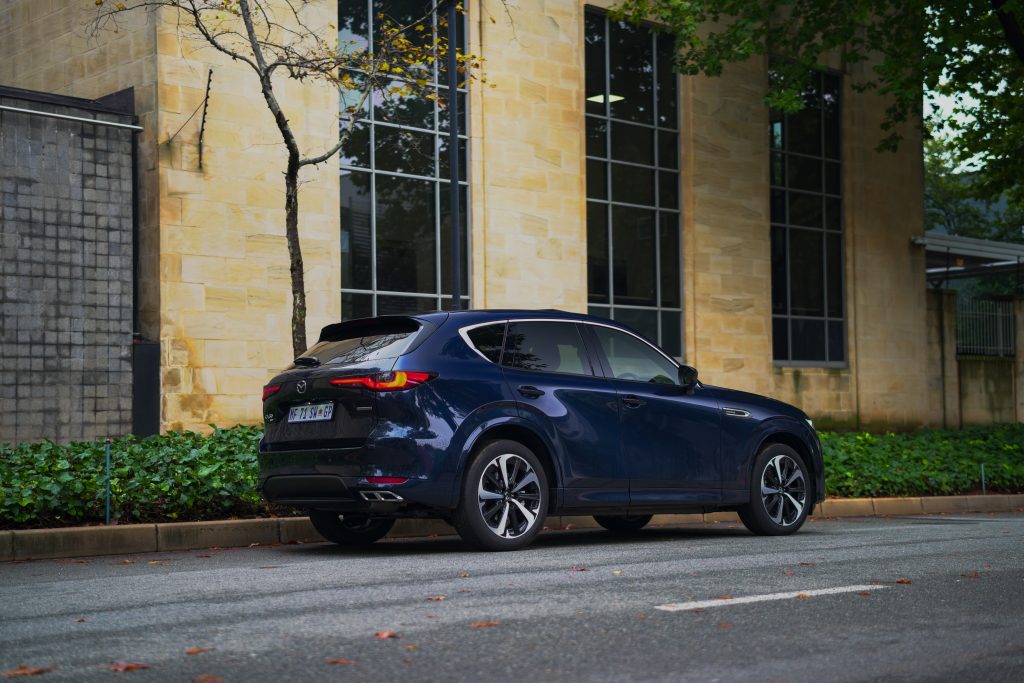
At 4,740mm long, 1,890mm wide, and 1,685mm tall, the CX-60 occupies a footprint similar to the BMW X3 and Mercedes-Benz GLC. It’s a handsome vehicle that attracts attention without resorting to design gimmicks or overstyled elements. The Soul Red Crystal paint option (R13,000 extra) remains one of the most striking finishes available on any car at any price point, with a depth and lustre that sets it apart from typical metallic reds. Our test model though, came in an executive Deep Crystal Blue.
The 20-inch alloy wheels fitted to our test vehicle struck a good balance between aesthetic appeal and ride comfort. Despite their size, they didn’t unduly compromise the ride quality on rougher surfaces – a common issue with large wheel options.
Tech That Serves the Driver
Mazda has taken a measured approach to technology integration in the CX-60. The digital instrument cluster and centre touchscreen are crisp and responsive, but they don’t dominate the cabin experience. Physical controls remain for all functions, it feels weird and slightly restricting given that the norm lately is touch screens in modern cars.

The heads-up display is one of the best in the business, projecting speed, navigation, and driver assistance information directly into the driver’s line of sight. Active driving displays have become increasingly common, but Mazda’s implementation stands out for its clarity and unobtrusiveness.
Safety and driver assistance systems are comprehensive, with the CX-60 featuring Mazda’s i-Activsense suite. This includes adaptive cruise control with stop-and-go functionality, autonomous emergency braking, blind-spot monitoring, and lane-keeping assistance. The 360-degree camera system provides excellent visibility when parking, though the resolution could be sharper.
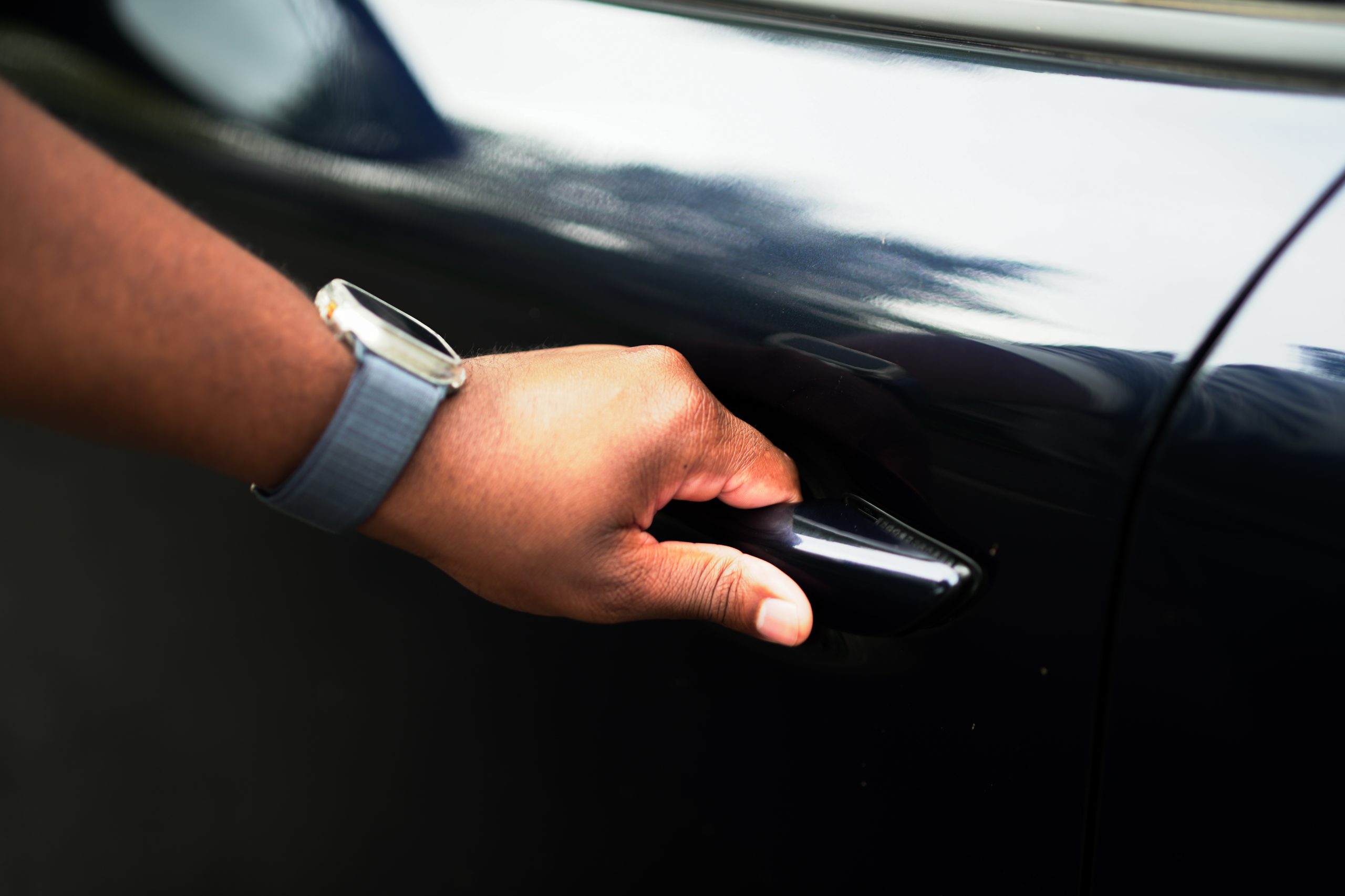
One thoughtful feature is the vehicle’s See-Through View, which creates a virtual transparent view of the vehicle’s underside when off-roading – particularly useful when navigating rough terrain where obstacles might be hidden from direct view.
Value Proposition
Starting at R914,000 for the 3.3L AWD Exclusive model and rising to R1,027,300 for the top-spec Takumi variant we tested, the CX-60 3.3L positions itself as a premium offering. While not inexpensive, it undercuts similarly equipped European rivals by a significant margin while offering comparable – and in some areas superior – quality, performance, and equipment levels.
The standard warranty package includes a 3-year/unlimited kilometre warranty and a 5-year/100,000km service plan, providing peace of mind for owners. Service intervals are set at 15,000km, which is on par with competitors.
You might also like
More from Cars
First Impressions: Hyundai Alcazar Makes Strong Case
The morning sun cast long shadows across the Hyundai South Africa headquarters in Bedfordview as journalists gathered for the launch …
Discovery Gets Bold Refresh with Exclusive Tempest and Gemini Editions
The beloved seven-seater Discovery SUV lineup has received a comprehensive update, introducing two striking special editions alongside enhanced features across …
Ford Launches Upgraded Commercial Vehicle Conversion Programme in Mzansi
Ford South Africa has officially launched its revamped vehicle modification programme – Ford Pro™ Convertor (FPC) – designed to provide …


